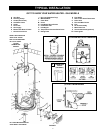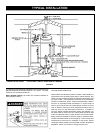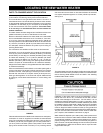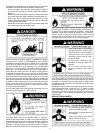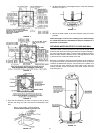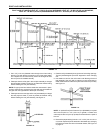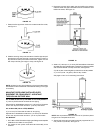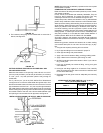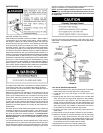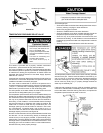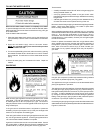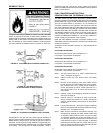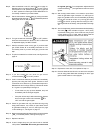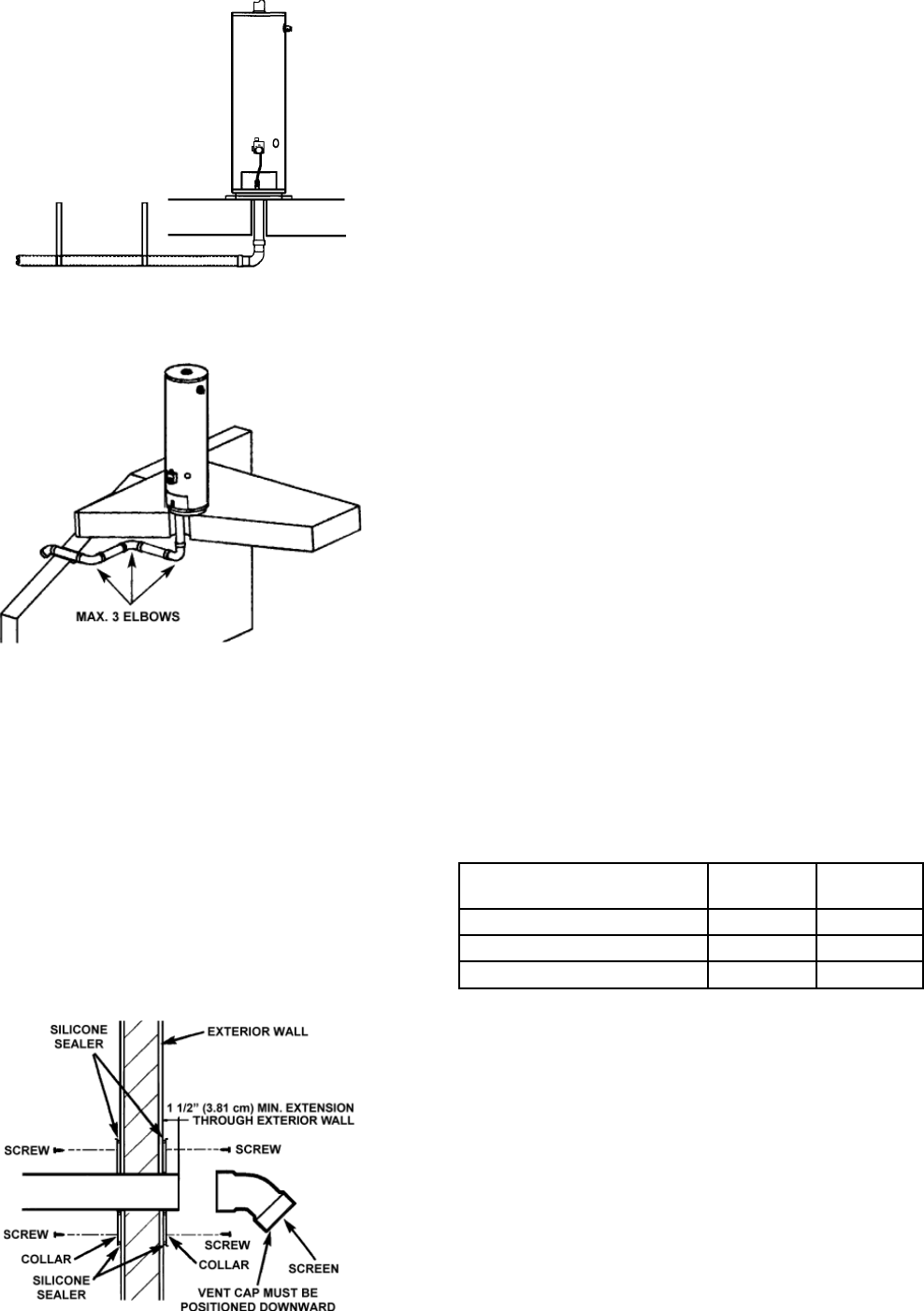
13
FIGURE 21.
6. The intake air vent piping can be installed with no more than 3
elbows, see Figure 22.
FIGURE 22.
CUTTING OPENING THROUGH AN OUTSIDE WALL AND
COLLAR INSTALLATION
Determine the location of the opening in the wall and cut a 3 3/4”
(9.53 cm) hole (30 Gallon (113.56 Liter) & 40 Gallon (151.42 Liter))
or 4 3/4” (12.07 cm) hole (50 Gallon (189.27 Liter)) through an
outside wall.
The 3” (7.62 cm) or 4” (10.16 cm) PVC, ABS or CPVC Schedule 40
vent pipe can be run from the water heater through the wall or from
the wall to the water heater, whichever is most convenient. The vent
pipe must extend a minimum of 1 1/2” (3.81 cm) through the exterior
wall. Note that the inside collar must be slipped over the vent piping
before locating the pipe through the wall. Before securing the inside
and outside collars to the wall, use a silicone sealer between pipe
and opening to insure a water and air tight seal, see Figure 23.
INSTALLATION SHOWING USE OF PVC, ABS OR CPVC PIPE
FIGURE 23.
NOTE: Wall collars are for aesthetic purposes and are not required
for the heater to operate.
CEMENTING PVC, ABS OR CPVC PIPE AND FITTINGS
Read and observe all safety information printed on primer, cleaner,
and cement containers.
Primer, cleaner, and cements are extremely fl ammable. They are
harmful or fatal if swallowed. The vapors are harmful. They may
irritate eyes and skin and can be absorbed through the skin.
Always store primer, cleaner, and cements in cool, dry, well ventilated
places. Keep containers closed. Use them in well ventilated areas.
Wear impervious clothing while handling. Do not smoke, eat, or drink
while handling. Wash thoroughly after handling and before eating.
Wear eye protection when handling. If swallowed, drink water, do
not induce vomitting, and call a physician or poison control center
immediately. If inhaled, get fresh air and seek medical attention if ill
feelings persist. In case of eye and skin contact, immediately fl ush
with plenty of water for 15 minuttes and seek medical attention if
irritation persists. KEEP OUT OF REACH OF CHILDREN.
All primers, cleaners, and cements must meet all local codes and
applicable standards of the American Society For Testing Materials
Standards.
Before using primers, cleaners and cements, stir or shake, making
sure contents are liquid. Do not use if found to be lumpy or jelly-
like.
Cut pipe ends squarely removing all burrs and dirt.1.
Dry fi t pipe and fi ttings to be connected for proper fi t.2.
Clean pipe and fi tting with primer/cleaner.3.
Apply a thin coat of cement to fi tting, avoiding puddling inside.4.
Apply a liberal coat of cement to pipe leaving no voids.5.
QUICKLY assemble parts while cement is fl uid! If you wait too 6.
long, recoat pipes.
Push pipe completely into socket of fi tting, turning as it goes 7.
until it bottoms.
Hold pipe and fi tting together for 30 seconds. Then carefully 8.
clean off excess with a cloth. Allow connections a suffi cient time
to cure before distrurbing.
Remember that vent pipes must be adequately and securely 9.
supported.
APPROXIMATE SETTING TIME FOR 2 1/2” (6.35 cm)
TO 4” (10.16 cm) PIPE JOINTS
TABLE 1:
MOVEMENT
OF JOINT
COMPLETE
SET
90°F (32.22°C) TO 150°F (65.56°C) 3/4 HR. 8 HRS.
50° (10.00°C) TO 90°F (32.22°C) 1 HR. 15 HRS.
0°F (-17.78°C) TO 50° (10.00°C) 1 1/3 HR. 18 HRS.



